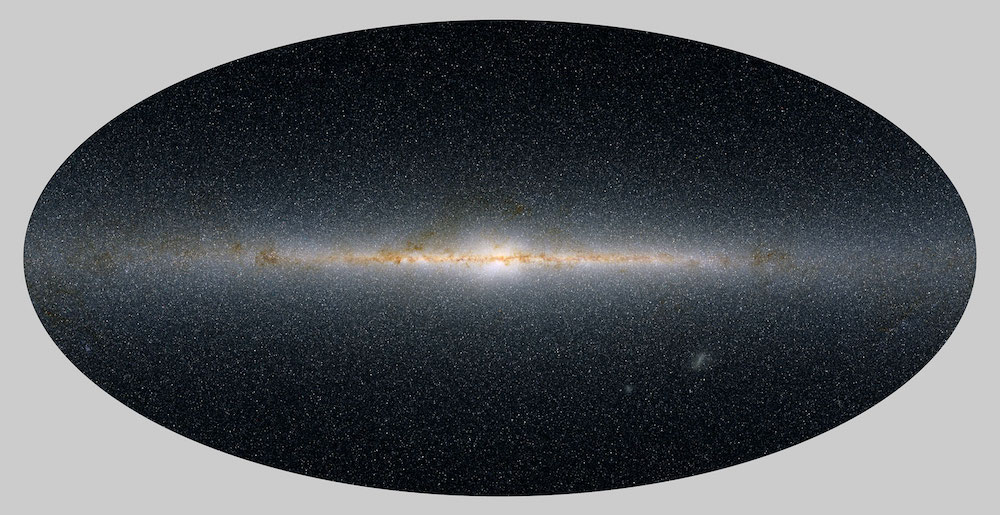
How fast they move depends on how much mass the galaxy has interior to them — so (to oversimplify a bit) if you look at a star 100,000 light years out, you can find the galactic mass out to that distance — so this can be used to get the mass out to various distances.
Choosing a convenient distance out — 100,000 parsecs, equal to 326,000 light years — they get the value of 690 billion solar masses.
A map of the Milky Way galaxy showing the Sun’s position (center) in the thin, minor Orion arm.They also use Gaia data and look to the Milky Way's halo, but instead of stars they use globular clusters, tightly packed collections of thousands to millions of stars.
The astronomers also use the rotation curve of the galaxy obtained using Gaia data, which is a measure of how rapidly stars in the flat disk revolve around the galaxy's center versus distance; this also yields a mass.
One thing they also took into account is how the Large Magellanic Cloud (or LMC), which orbits the Milky Way 170,000 light years out, might affect the structure of the galaxy; it can tug gravitationally and create substructures in the galactic disk, for example.
Dark matter is probably about 85% of all matter in the galaxy, and normal matter 15%.
These estimates are an improvement on earlier ones, and astronomers will be able to use them to understand better the Milky Way's environment — we're in a small group of several dozen galaxies large and tiny — and even its future, since the Andromeda Galaxy is another beefy spiral only 2.5 million light years away, and may be headed toward us for a future collision.